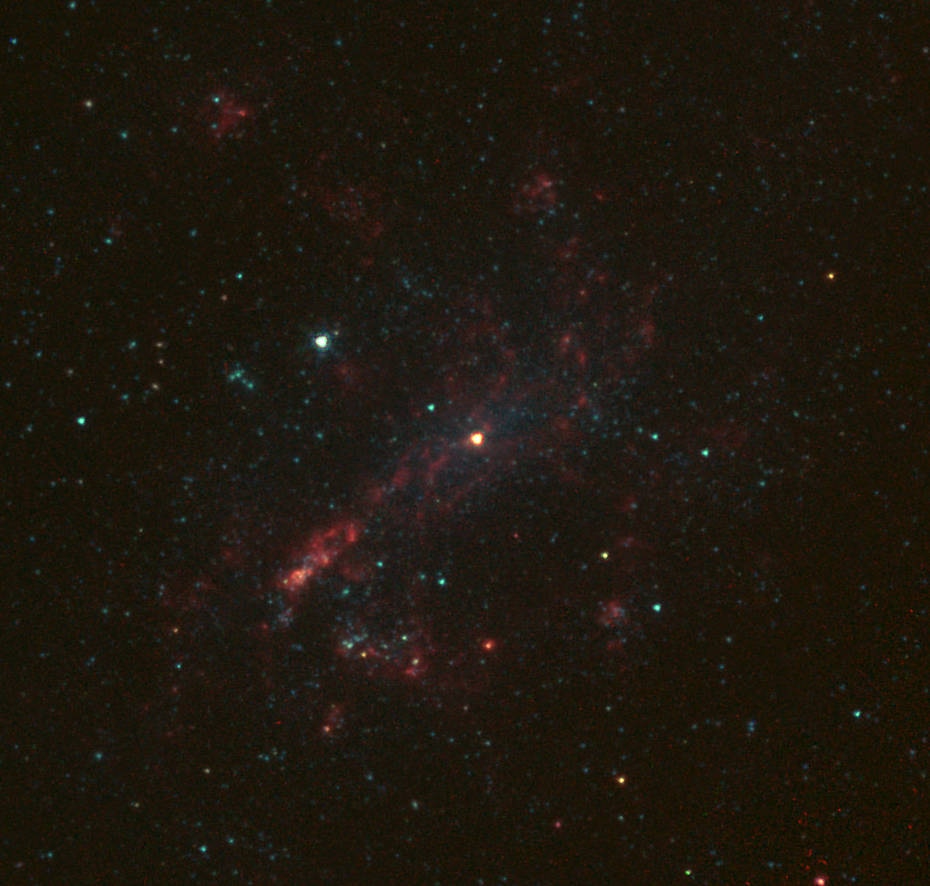Jun 11 2019
Astronomers who wish to know about the formation of supermassive black holes have to start small—really small, in astronomical terms.
 NGC 4395 is imaged with the Schulman Telescope at Mount Lemmon Observatory. (Image credit: Schulman Telescope)
NGC 4395 is imaged with the Schulman Telescope at Mount Lemmon Observatory. (Image credit: Schulman Telescope)
As a matter of fact, a group including astronomer Elena Gallo from the University of Michigan has found out that a black hole located at the center of an adjacent dwarf galaxy, named NGC 4395, is nearly 40 times smaller than thought earlier. The study outcomes have been reported in the Nature Astronomy journal.
At present, astronomers consider supermassive black holes located at the center of each galaxy to be larger than or as massive as the Milky Way. However, they are also inquisitive about black holes in smaller galaxies like NGC 4395. Knowledge of the mass of the black hole located at the center of NGC 4395—and the ability to accurately measure it—can help astronomers use these methods for other black holes.
The question remains open for small or dwarf galaxies: Do these galaxies have black holes, and if they do, do they scale the same way as supermassive black holes? Answering these questions might help us understand the very mechanism through which these monster black holes were assembled when the universe was in its infancy.
Elena Gallo, Associate Professor of Astronomy, University of Michigan
Gallo and her colleagues used the technique of reverberation mapping to determine the mass of NGC’s black hole. This technique involves measuring the mass by monitoring radiation emitted by a so-called accretion disk around the black hole. An accretion disk is a mass of matter gathered by the gravitational pull of black holes.
When radiation moves outward from the accretion disk, it passes via another cloud of material farther out from the black hole. This cloud is more diffuse compared to the accretion disk. This area is known as the broad-line region.
Upon hitting the gas in the broad-line region, the radiation causes atoms in it to experience a transition. This indicates that the radiation removes an electron out of the shell of an atom of hydrogen, for instance, making the atom to occupy a more energetic level of the atom. Once the radiation has passed, the atom settles back into its earlier state. This transition, which resembles a flash of brightness, can be imaged by astronomers.
Astronomers can predict how far the broad-line region is from the black hole by evaluating the time taken for the accretion disk radiation to hit the broad-line region and bring about these flashes. They can use this information to calculate the mass of the black hole.
The distance is thought to depend on the black hole mass. The larger the black hole, the larger the distance and the longer you expect for light to be emitted from the accretion disk to hit the broad-line region.
Elena Gallo, Associate Professor of Astronomy, University of Michigan
The astronomers used data from the MDM Observatory to calculate that it took nearly 83 minutes, give or take 14 minutes, for the radiation to reach the broad-line region from the accretion disk. They also had to measure the broad-line region’s intrinsic speed to compute the black hole mass. This is the speed at which the region cloud moves under the impact of the black hole gravity. They achieved this by taking a high-quality spectrum with the GMOS spectrometer on GEMINI North telescope.
By having a knowledge of this number, the speed of light, the speed of the broad-line region, and the so-called gravitational constant, or a measure of gravitational force, the astronomers could determine that the mass of the black hole was nearly 10,000 times the mass of Sun—around 40 times lighter than thought earlier. Moreover, this is the smallest black hole discovered by using the technique of reverberation mapping.
“This regime of dwarf galaxies is largely unexplored when it comes to the properties of their nuclear black holes,” stated Gallo. “We don’t even know if every galaxy has a black hole. This adds a new member to the family of black holes we have information about.”
This information can also assist astronomers to gain insights into how much larger black holes shape the galaxies they occupy. A field known as black hole feedback investigates the impact of black holes on the properties of their host galaxies at considerably larger scales than their gravitational pull should reach.
“There’s no reason why stars that live at orders of magnitude larger than the area where black hole gravity dominates should even know that there’s a black hole in their galaxy, but somehow they do. Black holes somehow shape the galaxy they live in on very large scales, and because we don’t know much about smaller galaxies with their smaller black holes, we don’t know whether that’s true all the way down. With this measurement, we can add more information to this relationship.”
This outcome was achieved through a partnership between U-M Astronomy and the Department of Physics and Astronomy at Seoul National University. Observations were made at the GEMINI North observatory in Hawaii and the MDM Observatory in Arizona. GEMINI is operated by a partnership between the United States, Canada, Chile, Brazil, Argentina, and Korea.